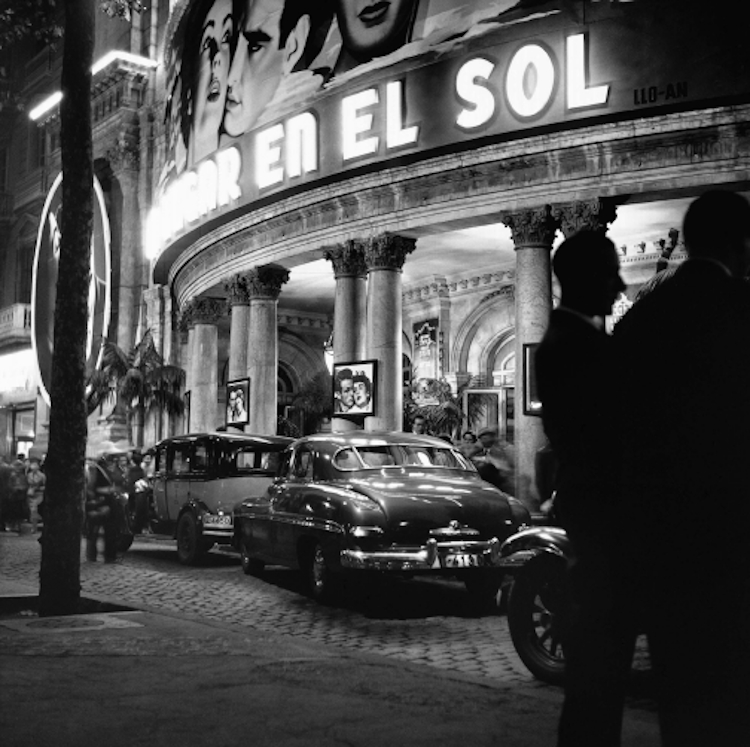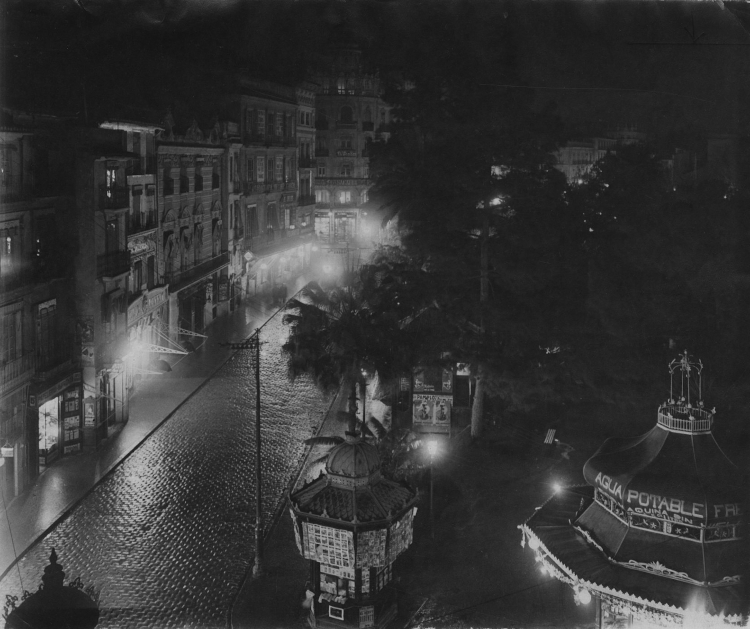
The human beings’ fascination for representing the night from photography’s early times led them to face all type of obstacles. The required long exhibition times allowed the unexpected to happen: light effects, the blurred headlights of occasional vehicles, distorted figures... All that, coupled with that magical complexity between night and loneliness, made night photography stand out.
The development of streetlights in big cities at the end of the 19th century allows photographers to navigate the darkness of the streets. London, Paris or New York were going to be photographed in the blue and yellowish light of gas lanterns. Photographers thus turned into night guardians, privileged witnesses of furtive meetings they attended behind their cameras. Sometimes, their movements were suspicious. By preparing the photo series London by Gaslight (1896), Paul Martin ended up being interrogated by an English policeman while he was adjusting his camera... In New York, Alfred Stieglitz managed to reduce exposure time to fifty eight seconds.
Helped by the magnesium flash, photographers began to be interested in photography as a social document. From 1888 New York come the photos taken by Jacob August Riis about life in the suburbs –“How the Other Half Lives”– firstly published in “Evening Sun”. The night and its inhabitants were already news.
In Spain, night photography didn’t take long to arrive. In 1895, the Blanco y Negro magazine had already created a section titled Madrid de Noche. La Puerta del Sol, an avant-garde stage for new streetlight systems, was turning into an important centre of night and entertainment, in a new space to conquer…

Nocturnes. Mentre la ciutat dorm is an homage to night life in the main Spanish cities of 19th century’s first half. An invitation to roam its streets and delve into its taverns, cafes, cinemas or theatres thanks to the photos our reporters skilfully managed to take with the help of magnesium flashes.
The current exhibition is also light’s defence into the night, and the development of streetlights; a conquest’s graphical testimony: the night city, until then left to a few night owls, artists and “wrong-doers”.
Authors state that the photos date back to the first masters of photojournalism, such as Alfonso, Cortés and Santos Yubero in Madrid; Brangulí, Gaspar, Sagarra and Torrents in Barcelona; Pacheco in Vigo... or Photographer and Editor Lucien Roisin, who went all over the country. Thanks to his snapshots, we will also know the work of the people in charge of maintaining the night operation of the big city’s machinery: the last tram drivers, construction workers, waitresses, lamplighters and night watchmen.
The universal exhibitions’ light and water plays will give way to the 30s and the times of the Second Republic, with the planned appearance of women in the night –mostly typists and university students– and the photo reports of clear social content. The damage made by the civil war and the lack of resources caused public streetlights to never recover. People had to wait until 50s decade for the arrival of modernity’s new light and witness a new dawn, with photographers as big as Portillo, Henece o Català-Roca.

Madrid, 1916. MECD, AGA, Fons MCSE
ARCHIVES AND COLLECTIONS:
|
Ajuntament de Girona |













